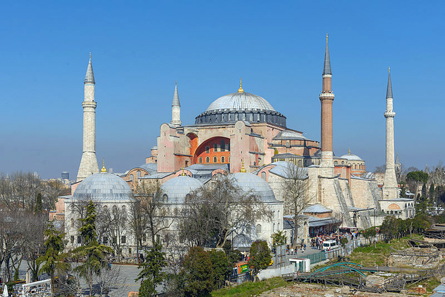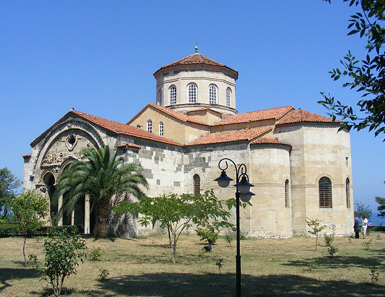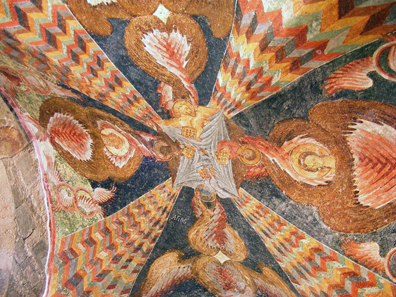by Björn Schöpe
August 15, 2013 – The Hagia Sophia in Istanbul is one of the most popular travel destinations of tourists in Turkey. Originally it was a Byzantine church which became a mosque after the conquest of Constantinople by the Turks. In 1935 eventually, the modern, secular state decided to turn the monument into a museum.
The Hagia Sophia in Istanbul was once a church, then a mosque. Since 1935 it has been a museum. Photo: Arild Vagen / http://creativecommons.org/licenses/by-sa/3.0/deed.en
Although religious movements have attempted ever since to employ the Hagia Sophia as a mosque, the monument stayed what it was – certainly also due to its substantial economic function being a main crowd puller. Its namesakes in Iznik and Trabzon were less safe, though, and since lately they are again being used as mosques. A vivid discussion over this development that regards other monuments as well has arisen in Turkey illustrating a central issue of the country: the side of the ‘nationalists’, say those who prize the state over the religion standing thus in the tradition of Atatürk, is still battling with the ‘religious’ who aim at strengthening the Islam in modern Turkey. Both groups are also fighting for the interpretational sovereignity of the history.
The Hagia Sophia in Trabzon at the Black Sea. Photo: Alaexis / http://creativecommons.org/licenses/by-sa/3.0/deed.en
In the Black Sea city of Trabzon (ancient Trapezunt) the most prominent monument is the Byzantine church Hagia Sophia. Like many other Byzantine churches it was converted to a mosque after the conquest by the Turks. It has served as well as an arsenal and a hospital before, in 1962, it was closed for religious service and turned into a museum. Previously the building had been restored in order to preserve this structure of the utmost relevance to the history of art.
Antony Eastmond of the Courtauld Institute of Art in London underlines that this ensemble of architecture, sculpture and painting makes the church unique: ‘This is the most complete surviving Byzantine structure; there is no 13th-century monument like it.’
The importance of the Byzantine church lies in the ensemble of architecture, painings and mosaics – all images have been covered to avoid praying visitors feeling insulted by them. Photo: Alaexis / http://creativecommons.org/licenses/by-sa/3.0/deed.en
The General Directorate, the institution responsible for historical mosques, had nevertheless the opinion that the Ministry of Culture and Tourism was occupying the building illegally since it was once destined to be a mosque by Mehmed II. According to the religious conviction this act could never be suspended. In 2012 a court followed the General Directorate’s opinion. Against all protests the monument started functioning as a mosque in time for Ramadan. Everything the faithfuls might feel offended by, the precious paintings, the mosaic floors and the figural sculptures, have been covered and shall remain in that state. Modern techniques permit to cover historical paintings among which a Christ Pantocrator in the vault, as Mazhar Yildirimhan states, the local representative of the General Directorate. He shrugs off any critic as pure propaganda and believes that the Hagia Sophia in Istanbul should also be turned into a mosque again since it was once used for religious services.
The marvellous paintings require conservational care. Photo: Alaexis / http://creativecommons.org/licenses/by-sa/3.0/deed.en
Indeed Turkey’s scientists are on the alert. It has occurred a couple of times already that Byzantine churches were transformed into mosques and restored. However, restauration happened not always in consultation with scientists and allegedly without the necessary attention to the structures. In the end they all share the same fate: All images are covered, the ensemble of cultural history is untied, and instead of showing the monument’s importance in its entirety the function as a room for religious service is given priority.
The situation is concerning because the religious representatives want to show their power and turn historical buildings continuously into mosques if they had served previously to this purpose. If Christians had a similar influence their position would be much stronger in case they desired to turn the monuments into churchs since this was the original function of the Byzantine monuments. And indeed there are people who firm petitions and who write letters to editors affirming how deplorable it is that a church has become a mosque …
The real problem, however, is not what kind of religious service is being practiced in the buildings or in what language people pray in these halls. The walls saw Christian and Muslim rites alike and both religions share historically in the monuments’ history. But if we consider them as culturally valuable testimonies of the past we must, in consequence, restore them responsibly and show them in their whole being to the public as far as conservationally permitted. Those who want to practice their religion may not feel threatened by that since there are enough alternatives at hand. And many of them are not very frequented as representatives of religious associations state. But there is no second Hagia Sophia in Trabzon and we can only hope that the one existing may remain in its current condition for a long time.
In The Art Newspaper Andrew Finkel wrote an extensive article on that topic.
TRT English reported about the first service in the new mosque after over 50 years.
In a video you can watch the Hagia Sophia.
There is also a Facebook group: The Hagia Sophia in Trabzon must remain a museum …
… and a petition on that behalf.








